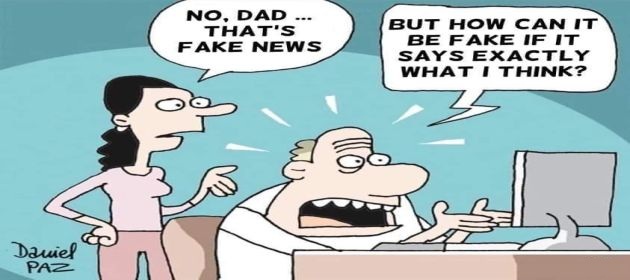During the recent retaliatory face-off with Pakistan in the aftermath of the terrorist attack at Pahalgam, a barrage of fake news was unleashed by various news channels. One of them even claimed that Indian forces had captured several cities of the neighboring country. At times, their ‘Breaking News’ were so ludicrous that, I’m sure even the hardcore pseudo-nationalists would have found them indigestible; but nonetheless such false news were rampant during this time. Despite regular briefing by defence spokespersons about the situation on the ground, none of these news channels relented or seemed embarrassed for spreading such nonsense. The approach of the media on the other side of the border was more or less the same.
I really wondered why these news channels, even if it is assumed that they were doing so at the instance of some ‘people-in-power’, spread such outright lies putting at stake whatever little credibility they might have been enjoying. And, why in the first place, those ‘people-in-power’ resort to spreading such flagrant lies knowing full well that their lies may not survive even for a couple of hours.
The whole purpose of spreading such nonsensical news, as it seems, is to make people not to believe in ‘news’ itself – no matter whether they are well-sourced, evidence-based or false and fabricated. The propagandists want people to remain ever suspicious of just about any news item they may come across. But again, what real advantage do they actually gain from such a scenario?
I would try to explain it by giving an example. We are living in the age of Artificial Intelligence and most of us are also aware of the deepfake technology which uses artificial intelligence to create realistic but fake videos and images by synthesizing media to show people doing or saying things they never did. Now, imagine that a video-clip of a particular politician goes viral where he is seen with a woman on a highway indulging in a sexual act under the open sky – and just take it for now that this is a true incidence. Now, what would be the response of this politician? He would simply say that the person seen in the video is not him and that the whole thing is AI generated.
Now, even though you take this video-clip as genuine (given the image of a politician we generally have in our minds), some doubt would still be there in your mind. You may question yourself – what was the need for this ‘gentleman’ to do such a shameful act in broad public view? You would start doubting what you believe. And who would benefits from it? Of course, the person who was caught indulged in such indefensible shameful act. A technology notorious for presenting ‘fake’ content in the most convincing way often ends up benefiting the wrongdoers.
The same thing is happening here. The media, whether willingly or otherwise, may or may not acting on the behest of these ‘people-in-power’ fabricate the news to such an extent that people just do not believe in them, even when some of them are actually authentic. You doubt and the wrongdoer gets the ‘benefit of doubt’. But then how would these ‘people-in-power’ get benefitted when people would stop believing in their propaganda too?
Here, to explain this, I would like to refer to a humorous political cartoon I came across just a few weeks back, where a young girl is seen asking his father not to believe in a ‘fake news’ he was watching over television, and the father retorts by saying – “But, how can it be fake if it says exactly what I think?”
So, this is the ground reality. People would cling to what they believe is true, no matter how plainly and differently the truth reveals itself. They would believe what agrees with their own perspective. They may not even be interested in appreciating the facts. And the ‘people-in-power’ know it just too well. They know that the people would go ultimately by the perceptions they have, rather than the facts; and, with significant control over the media, they can also manipulate their perceptions (at least, this is what they seem to believe). And, once a person’s perception is manipulated, breaking free from that distortion becomes a daunting task.
I give another example here to show how difficult it could be to get a faulty perception out of our minds. Suppose, I ask a member of the majority community in India to name a religious community, which, in his view, is the most violent in nature in the world and also the one which he considers the most tolerant one. Now, if one could identify with this person, he could well imagine the answers. Going by the facts however, this person might inwardly realize that this is just his perception especially when he sees the plight of the people in a middle east country which is under severe siege for the last more than two years now; or the plight of a minority community in a country where somebody is lynched merely on the suspicion of having stored beef at his home – ironically the very country which is amongst the top most exporters of beef in the world. But, despite knowing all this, do you think this person would ever realize and change the image he holds in his mind about the two communities? No, I honestly have serious doubts about that.
So even knowledge of facts doesn’t seem to be of much help and that’s something really worrisome. Under such circumstances, the best we could do, as sensible individuals, is not to believe and let any unverified piece of information leave our hands. I conclude my blog post with a prayer from one of the ancient Hindu scriptures बृहदारण्यक उपनिषद् – “असतो मा सद्गमय । तमसो मा ज्योतिर्गमय । मृत्योर्मा अमृतं गमय ॥“ (Lead us from untruth to truth, from darkness to light, from death to immortality).
